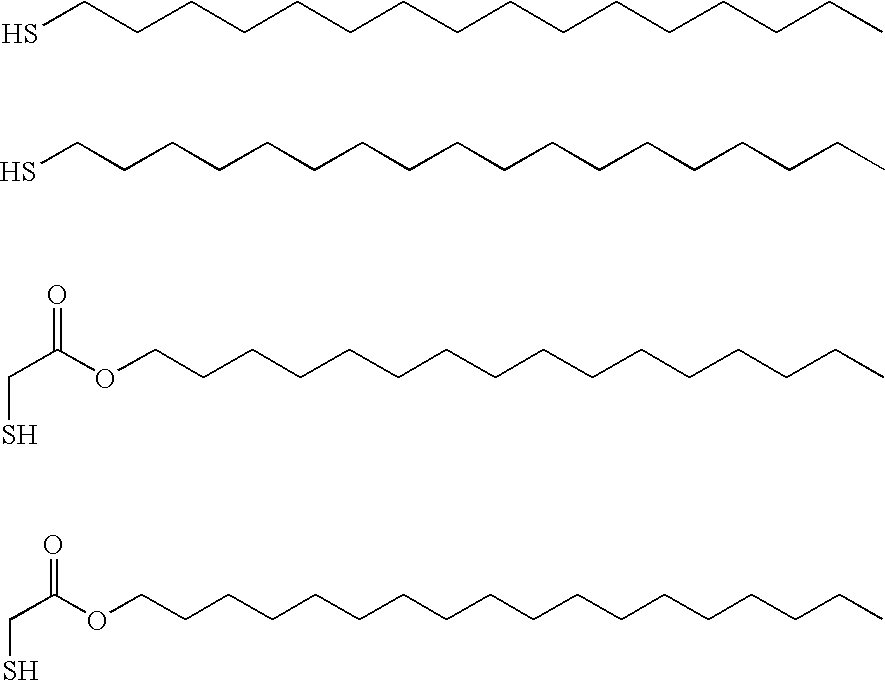Metal alloy manufacturing
a technology of metal alloys and alloys, applied in the field of metal alloys, can solve the problems of affecting the overall physical properties of sterling, difficult work, tendency to crack, etc., and achieve the effect of reducing quenching, high zinc and silicon conten
- Summary
- Abstract
- Description
- Claims
- Application Information
AI Technical Summary
Benefits of technology
Problems solved by technology
Method used
Image
Examples
example 1
[0112] A silver-copper-germanium-silicon alloy (Ag=94.7 wt %, Ge=1.2 wt %, Cu=3.9 wt % Si=0.2 wt %, added as a Cu / Si master alloy), is prepared by melting silver, copper, germanium and master alloy together in a crucible by means of a gas-fired furnace which becomes heated to a pour temperature of about 1093° C. (2000° F.). The melt is covered with graphite to protect it against atmospheric oxidation and in addition a hydrogen gas protective flame is provided. Stirring is by hand using graphite stirring rods. When the above ingredients have become liquid, pellets of sodium borohydride to give up to 100 ppm boron e.g. 80 ppm are packaged or wrapped in pure silver foil of thickness e.g. about 0.15 mm. The foil wrapper holds the pellets of sodium borohydride in a single group and impedes individual pellets becoming separated and floating the surface of the melt. The wrapped pellets are placed into the hollow cupped end of a graphite stirring rod and plunged beneath the surface of the m...
example 2
[0116] A ternary silver-copper-germanium alloy (Ag=94.7 wt %, Ge=1.2 wt %, Cu=4.1 wt %) is prepared by melting silver, copper and germanium and master alloy together and adding sodium borohydride as described in Example 1 and is formed into sheet. Pieces of the sheet are brazed together to form shaped articles by passage through a brazing furnace and are simultaneously annealed. Precipitation hardening develops without a quenching step by controlled gradual air-cooling in the downstream cooling region of the furnace. For this purpose, it is desirable that the material should spend at least about 8-30 minutes in the temperature range 200-300° C. which is most favourable for precipitation hardening. Articles that have been brazed in a furnace in this way and gradually cooled can achieve hardness of 110-115 Vickers. Exceptionally small grain size and good firestain and tarnish resistance is obtained because of the sodium borohydride addition.
example 3
Alloys Were Prepared with the Compositions and Boron Contents Indicated in Table I Below Using CuB Master Alloys the Source of Boron
[0117]
TABLE 1Precip.Hard-Annealedened*Precip.hardness(air-Hardened*(air-SampleBcooled)(quenched)cooled)IDAg %Ge %ppmCu %HVHVHVSterling92.7007.3 86 / 753.195.441.543.06108115673.2**961.55Yes2.45107110643.3**962Yes2110106633.4**97.301Yes1.7 93 99403.5**98.661.2Yes0.14 28*** 28***28***
*Precipitation hardening (air cooled) - sample annealed, air cooled, then heated at 300° C. for 45 minutes. Precipitation hardening (quenched) - sample annealed, quenched, then heated at 300° C. for 45 minutes.
**No final assay results available. Table shows alloy make-up before melting.
***No precipitation hardening.
[0118] Further improvements in hardness and greater ease in polishing are obtained by increasing the boron content using sodium borohydride in place of CuB master alloy, melting following the procedure set out in Example 1.
PUM
| Property | Measurement | Unit |
|---|---|---|
| Temperature | aaaaa | aaaaa |
| Temperature | aaaaa | aaaaa |
| Time | aaaaa | aaaaa |
Abstract
Description
Claims
Application Information
 Login to View More
Login to View More - R&D
- Intellectual Property
- Life Sciences
- Materials
- Tech Scout
- Unparalleled Data Quality
- Higher Quality Content
- 60% Fewer Hallucinations
Browse by: Latest US Patents, China's latest patents, Technical Efficacy Thesaurus, Application Domain, Technology Topic, Popular Technical Reports.
© 2025 PatSnap. All rights reserved.Legal|Privacy policy|Modern Slavery Act Transparency Statement|Sitemap|About US| Contact US: help@patsnap.com

